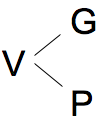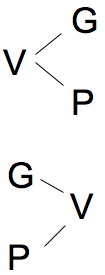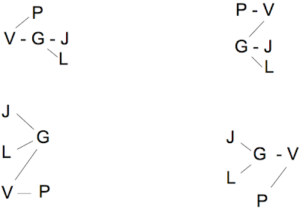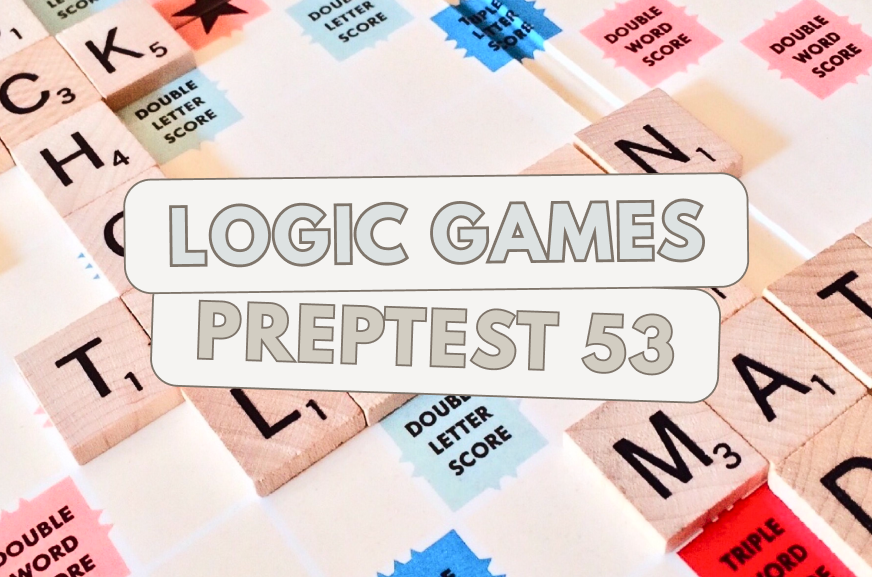This post is the third of a three-part series on conditional sequencing rules in Logic Games. The first part of this series covers an easier version of the conditional sequencing rule.
This post will explain the “before, after, but not both” rules of the 2nd game in PrepTest 53 (December 2007).
PrepTest 53, Game 2
The game starts off, “A competition is being held to select a design for Yancy College’s new student union building…”
The rules I’m about to describe are exactly like the rule I described in the second post of this series.
However, because this type of rule confuses many students the first time around, I’m going to explain these rules anyway.
If you feel comfortable with the rule, that’s great! Attempt the rules in this game yourself, then check them against my explanations below.
2nd rule of the game:
“Green’s design is presented either at some time before Jackson’s or at some time after Liu’s, but not both.”
This means that either both variables come before G, or both come after G.
(Keep in mind one of the game’s other limitations, which is that no two variables can occur simultaneously – they must all occur at different times.)
1st possibility:
If G is before J, then G is not after L.
If G is not after L, G is before L.
Therefore, G is before both J and L.

2nd possibility:
If G is after L, then G is not before J.
If G is not before J, G is after J.
Therefore, G is after both L and J.

Our possibilities are:

Each valid scenario (ordering of the variables) will feature one of these possibilities or the other.
3rd rule of the game:
“Valdez’s design is presented either at some time before Green’s or at some time after Peete’s, but not both.”
This means that either both variables come before V, or both come after V.
1st possibility:
If V is before G, then V is not after P.
If V is not after P, V is before P.
Therefore, V is before both G and P.

2nd possibility:
If V is after P, then V is not before G.
If V is not before G, V is after G.
Therefore, V is after both G and P.

Our possibilities are:

Each valid scenario (ordering of the variables) will feature one of these possibilities or the other.
***
The two possibilities in each of the two rules above can be combined into 4 different possibilities:

On the top-left, we have G before both J and L – combined with V before both P and G.
On the top-right, we have G before both J and L – combined with V after both P and G.
On the bottom-left, we have G after both J and L – combined with V after both P and G.
On the bottom-right, we have G after both J and L – combined with V after both P and G.
***
The rules described in this series haven’t come up in the most recent exams, but that doesn’t necessarily mean they won’t come up in the near future.
After reading this series, you’ll be ready for any “before, after, but not both rule” they throw at you.

